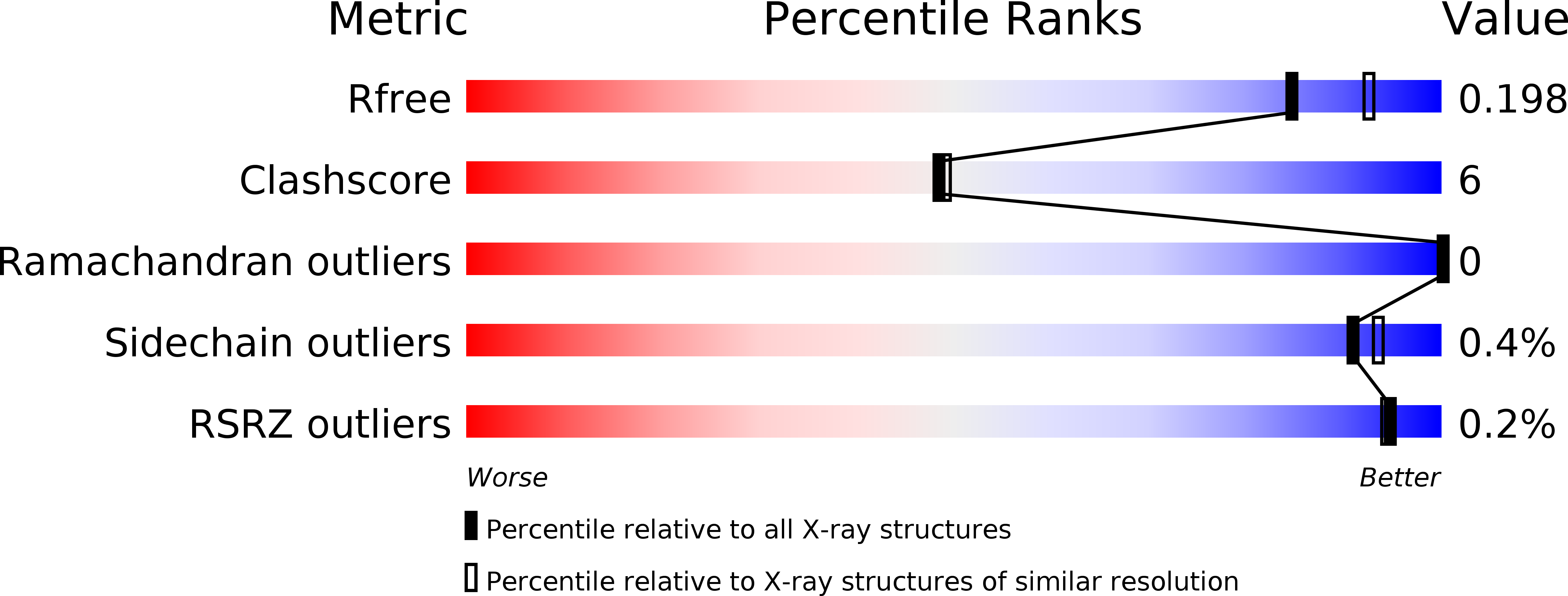Structure and Activity of the Streptomyces Coelicolor A3(2) Beta-N-Acetylhexosaminidase Provides Further Insight Into Gh20 Family Catalysis and Inhibition.
Nguyen Thi, N., Offen, W.A., Shareck, F., Davies, G.J., Doucet, N.(2014) Biochemistry 53: 1789
- PubMed: 24559145
- DOI: https://doi.org/10.1021/bi401697j
- Primary Citation of Related Structures:
4C7D, 4C7F, 4C7G - PubMed Abstract:
β-N-acetylhexosaminidases (HEX) are glycosidases that catalyze the glycosidic linkage hydrolysis of gluco- and galacto-configured N-acetyl-β-d-hexosaminides. These enzymes are important in human physiology and are candidates for the biocatalytic production of carbohydrates and glycomimetics. In this study, the three-dimensional structure of the wild-type and catalytically impaired E302Q HEX variant from the soil bacterium Streptomyces coelicolor A3(2) (ScHEX) were solved in ligand-free forms and in the presence of 6-acetamido-6-deoxy-castanospermine (6-Ac-Cas). The E302Q variant was also trapped as an intermediate with oxazoline bound to the active center. Crystallographic evidence highlights structural variations in the loop 3 environment, suggesting conformational heterogeneity for important active-site residues of this GH20 family member. The enzyme was investigated for its β-N-acetylhexosaminidase activity toward chitooligomers and pNP-acetyl gluco- and galacto-configured N-acetyl hexosaminides. Kinetic analyses confirm the β(1-4) glycosidic linkage substrate preference, and HPLC profiles support an exoglycosidase mechanism, where the enzyme cleaves sugars from the nonreducing end of substrates. ScHEX possesses significant activity toward chitooligosaccharides of varying degrees of polymerization, and the final hydrolytic reaction yielded pure GlcNAc without any byproduct, promising high applicability for the enzymatic production of this highly valued chemical. Thermostability and activation assays further suggest efficient conditions applicable to the enzymatic production of GlcNAc from chitooligomers.
Organizational Affiliation:
INRS-Institut Armand-Frappier, Université du Québec , 531 Boul. des Prairies, Laval, Québec H7V 1B7, Canada.
















